This ebooks is
downloadable at this webpage: http://www.hlebooks.com/ebook/fn1903E.htm
Ebook's Content
Field stripping of the FN 1903 pistol
- Removal of
the magazine
- Dismounting of the slide-barrel assembly
- Removal of the barrel bushing
- Separation of the barrel from the slide
Advanced
dismounting of the slide
-
Dismounting of the firing pin
- Dismounting of the extractor
- About the front and rear sights
Advanced
dismounting of the frame (I)
- Removal of
the grip plates
- Release of the grip safety
- Dismounting of the safety lever
Advanced
dismounting of the frame (II)
-
Dismounting of the hammer and ejector
- Detachment of the grip safety
- Removal of the sear/trigger return spring
- Removal of the magazine catch
- Dismounting of the sear-disconnector group
- Removal of the trigger
- Detachment of the holdopen latch
Reassembly
tips (I)
- Necessary
tools
- Reinstallation of the trigger
- Reinstallation of the sear and disconnector
- Reinstallation of the ejector
- Reinstallation of the magazine latch and sear spring
Reassembly
tips (II)
-
Reinstallation of the grip safety and main spring
- Reinstallation of the hammer
Functioning
of the FN pistol Model 1903 (I)
- The 9mm
Browning Long cartridge
- Webley pistol Model 1909
- Le Francais "Army" model
- STAR Model 1922
- Swedish submachine gun Model 1937
- Conversion of the FN 1903 in .380 caliber
- Makarov magazine adapted to the FN 1903
Functioning
of the FN pistol Model 1903 (II)
- A
blow-back design
- Area of abutment in the receiver
- Areas of deformation on the barrel
- Manual cycling of the gun
- Cocking of the concealed hammer
- Chambering of a cartridge
- Frequent cause of misfeeding avoided
- Feed ramp of the frame and barrel
Functioning
of the FN pistol Model 1903 (III)
- Last steps
of the cartridge chambering
- Extractor action on the case
- Upon firing
- Ejection of the spent case
- Return of the slide
- Holdopen latch lifted by the magazine follower
- Lowering of the holdopen latch
Trigger
mechanism of the FN pistol Model 1903
- The
trigger explained
- Vertical travel of the trigger extension
- Trigger under pressure of a leaf spring
- Trigger/sear engagement
- Disconnector's action on the trigger
- Trigger mechanism in the Colt pocket "Hammerless"
- The sear explained
- Release of the hammer
- Explosion and disconnection
Safeties
of the FN pistol Model 1903
- No hammer
safety notch
- Hammer safety notch in the Colt .45 Government
- Early sear and hammer of the Colt pocket "Hammerless"
- Colt pocket "Hammerless" with hammer safety notch
- No magazine safety
- Tansley magazine safety of the Colt pocket "Hammerless"
- The manual safety explained
- The automatic grip safety explained
Related
J. M. Browning's patents
- J. M.
Browning's patent No 747,585
- Evolution of the Browning designs
- Colt Model 1900
- FN Model 1900
- A new type of barrel attachment
- A new slide design
- The FN request for a larger semi-auto pistol
- Belgian patent no 163,375
Belgian
production of the FN Model 1903
- The pistol
and its cartridge
- FN and Swedish dummy cartridges
- Names and producers codes of the cartridge
- 9mm Browning Long head stamps
- The two basic variations of the pistol
- With or without grip slots
- Adjustable rear sight
- The shoulder stock of the first type
- Original FN issued advertising folder
- Installation procedure of the removable stock
- The Russian shoulder stock
- The shoulder stock of second type and first variation
- Variations of the hinge iron in the stock
- The shoulder stock of second type and second variation
Commercial
life of the FN Model 1903 pistol
- An
international network of retailers
- The Swedish purchases
- The Turkish (Ottoman Empire) purchases
- The Russian purchases
- The Paraguayan and Salvadorian purchases
- The Estonian purchases
The
Swedish manufacture of the FN 1903 pistol
- Husqvarna Vapenfabriks Aktiebolag / Brownings Patent
- Husqvarna Vapenfabriks Aktiebolag / System Browning
- Husqvarna Vapenfabriks Aktiebolag
- Husqvarna Vapenfabriks AB
- Slide without firm marking
- Swedish Military markings found on the M/07
- Serial number found on several parts of the pistol
- Other notable markings
Ebook screen prints
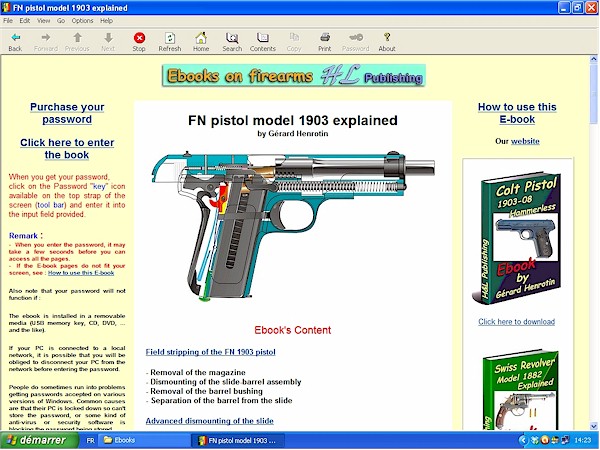
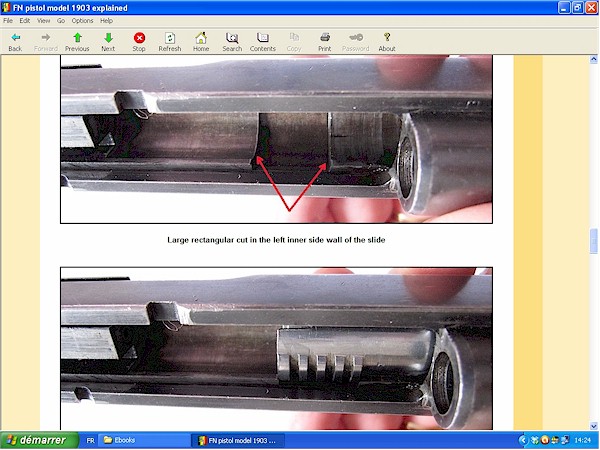
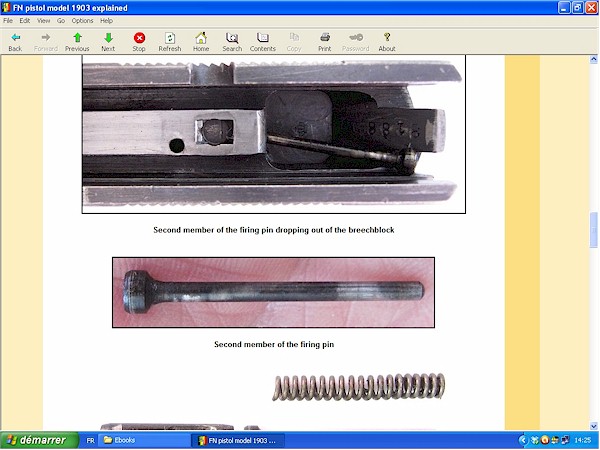
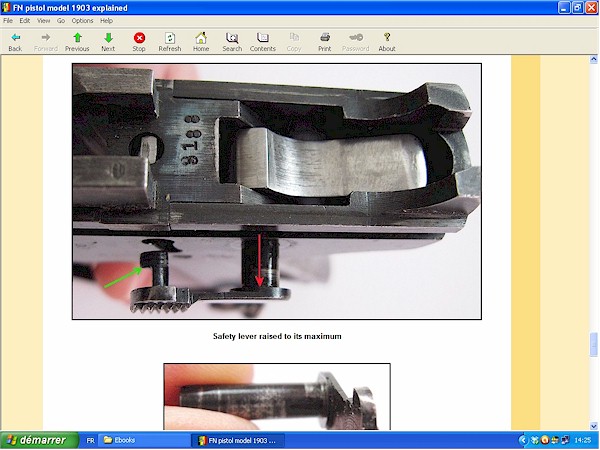
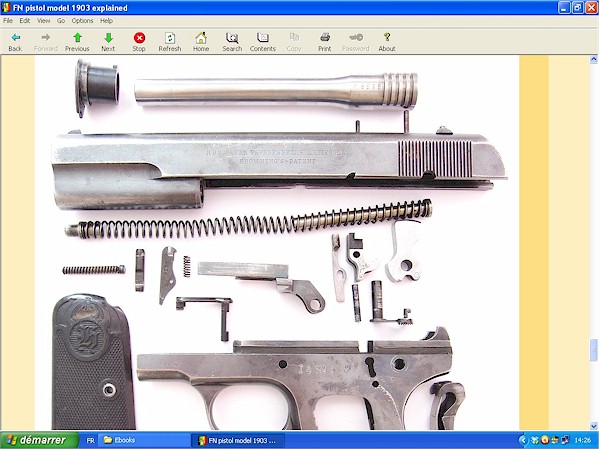
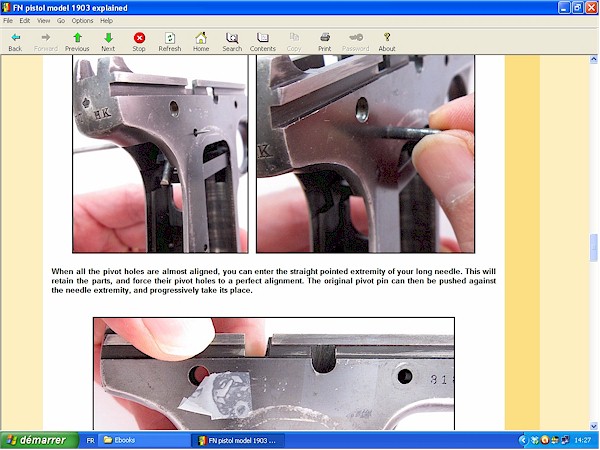
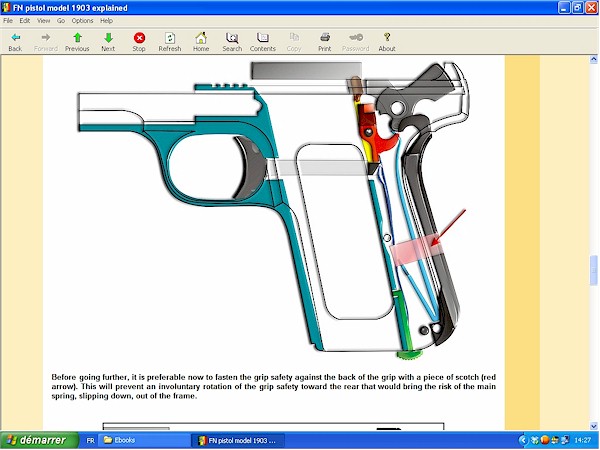
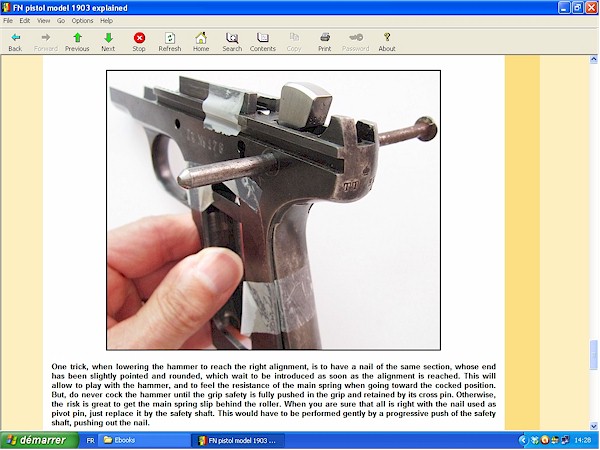
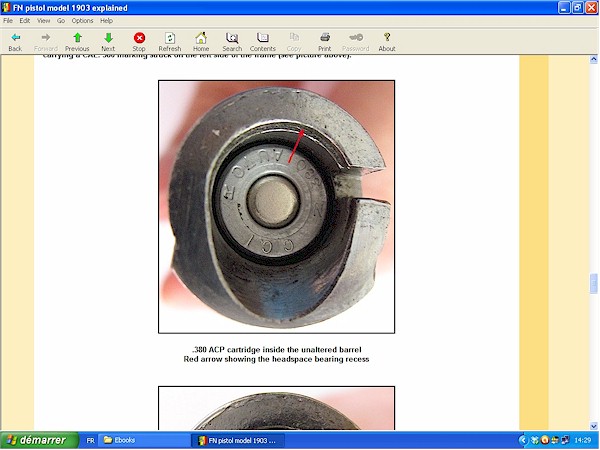
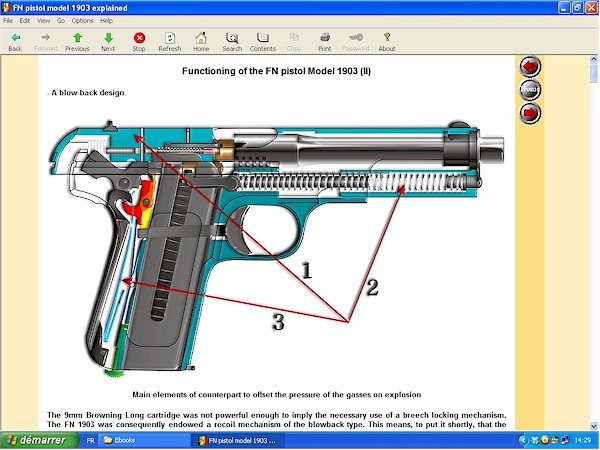
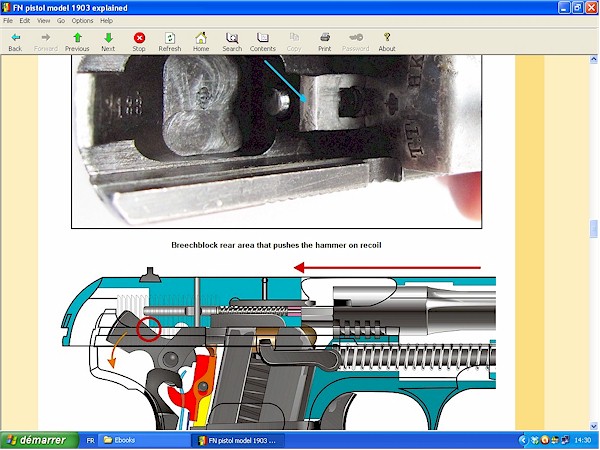
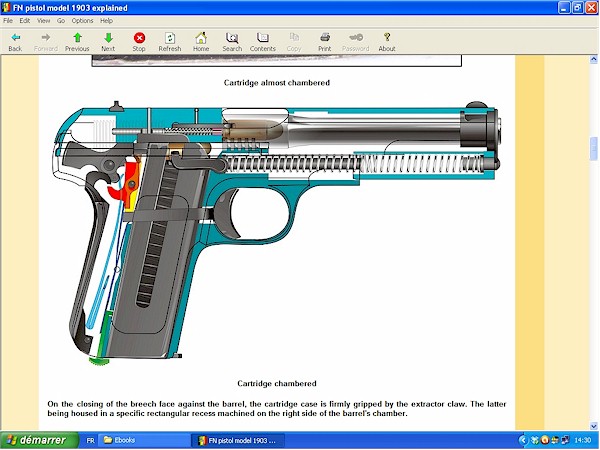
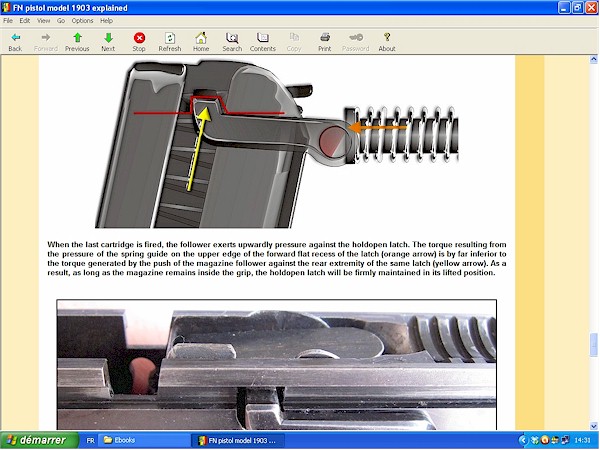
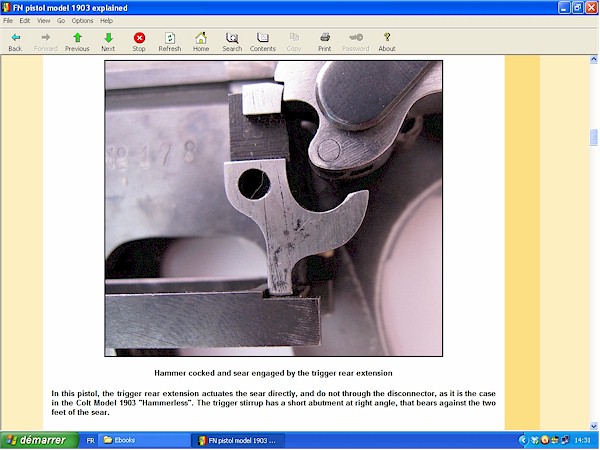
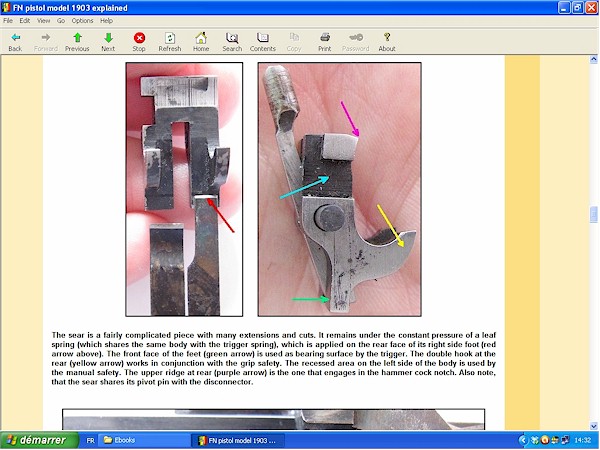
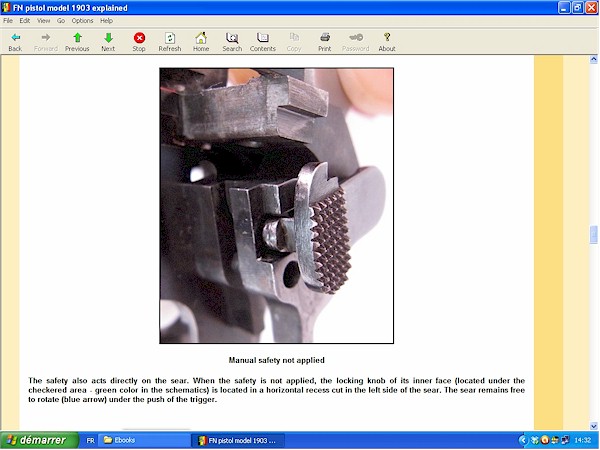

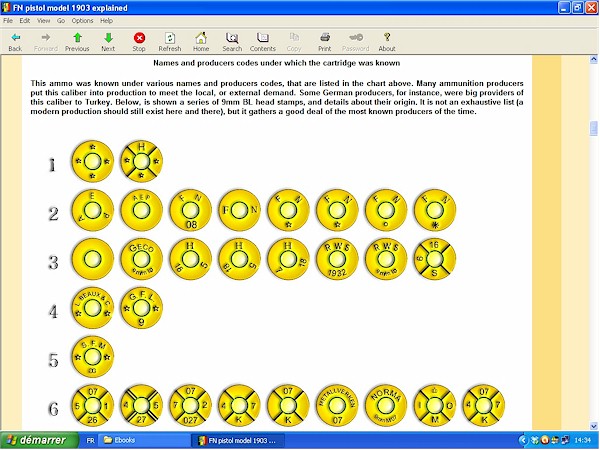
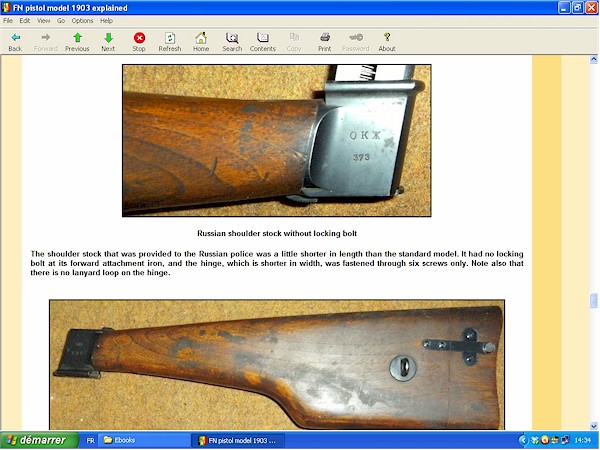
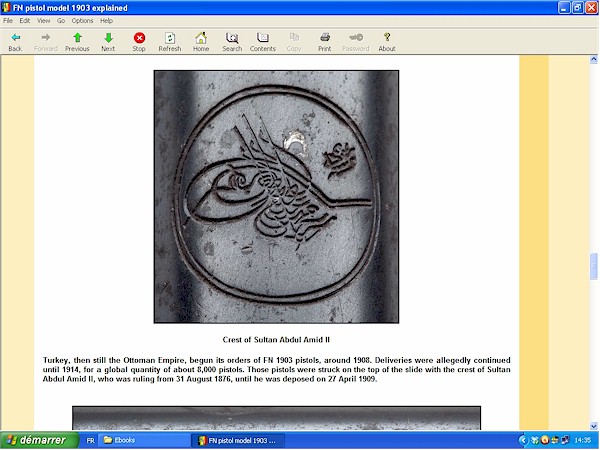
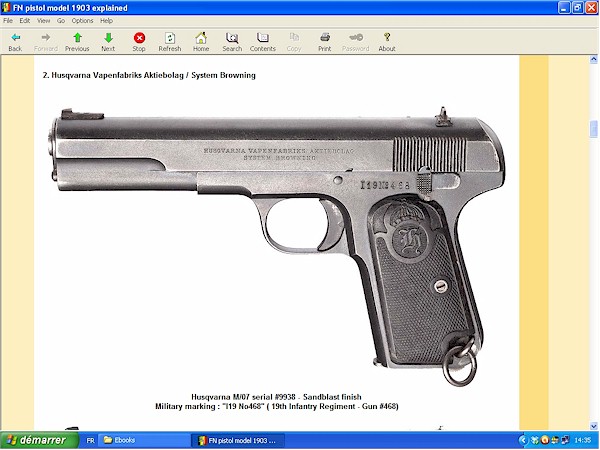
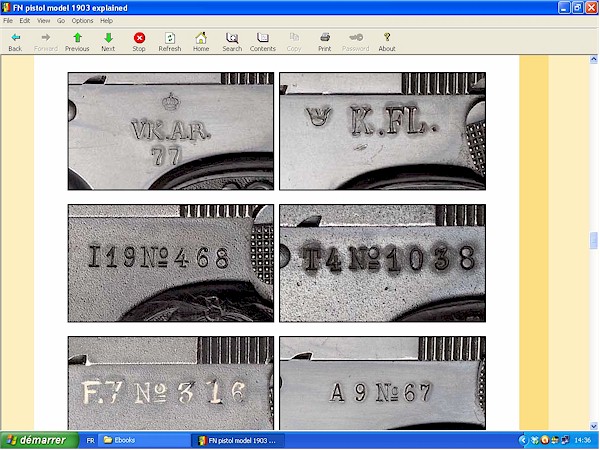
This ebooks is
downloadable at this webpage: http://www.hlebooks.com/ebook/fn1903E.htm




















































